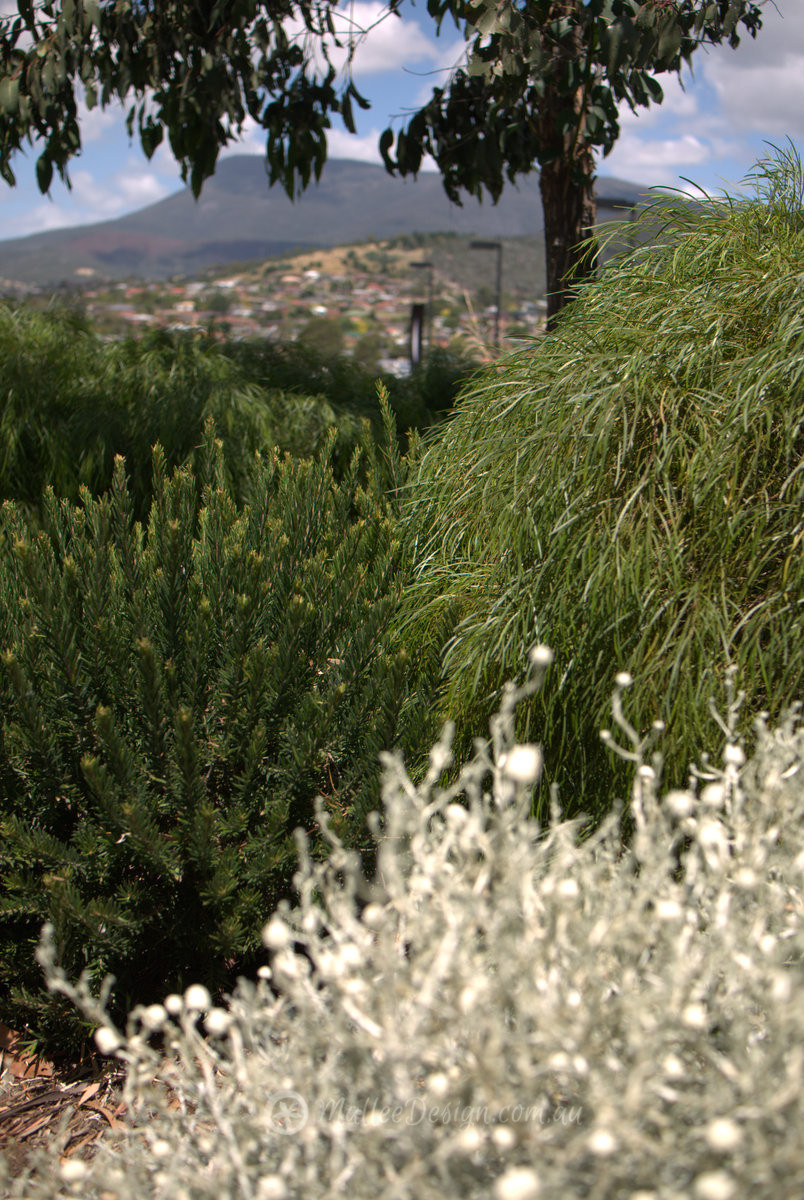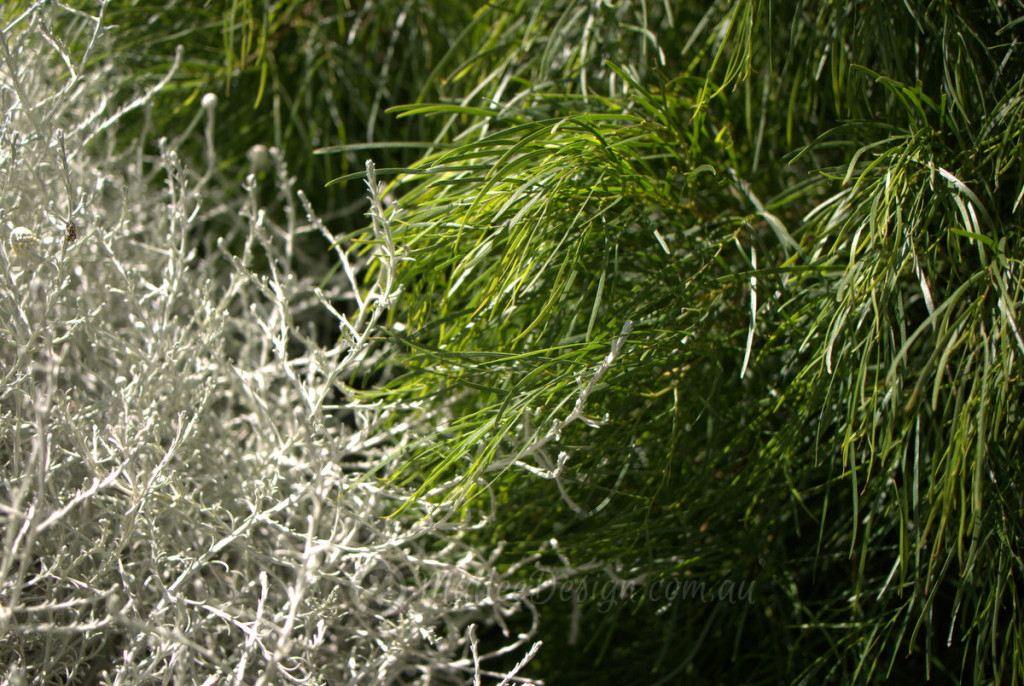When I was at Mona in Hobart last month as always I had my camera with me, I love the planting design at MONA and I had a few spare minutes between consuming modern art to snap some inspiring pictures. I took these photos because I loved the plant combinations and wanted to sure these with people. Please keep in mind these garden beds are in Tasmania and the natives in the photos are growing in a part of Australia with very little to no humidity. Lucky them 😉
I have been thinking about what appeals to me so much about this plant combination and it has brought me back to the Tapestry garden aesthetic. You can read more on a previous post I wrote about Tapestry gardens here.
In short Tapestry gardens are built on foliage contrast and the plants over all ‘form’ by combining these elements you can create a garden with year round interest and plenty of texture. In the images above you can see how beautifully the Leucophyta brownii contrasts with the Acacia ‘Green Mist’ in both form and foliage, a winning combination!
In the image above in the foreground there is Correa alba on the left and Correa baeuerlenii on the right which in themselves make a great combination, and then the Acacia ‘Green Mist’ in the background sets it off.
The image above is a little more subtle incorporating Westringia ‘Zena’ in the middle, which keeps a great low mounding habit without too much pruning.
The vertical element of gasses can also be useful in Tapestry gardens, above you can see Dianella revoluta in the centre, Poa labillardieri on the right and Ficinia nodosa weeping in the rear.
There are plenty of Correas used in these garden beds, they prune happily into balls and can also be left alone to mound in a more naturalists way. I love the combination of the Correa above with the Cushion Bush.
And one last shot of my two favourites together, so delicious!
















Leave a Reply